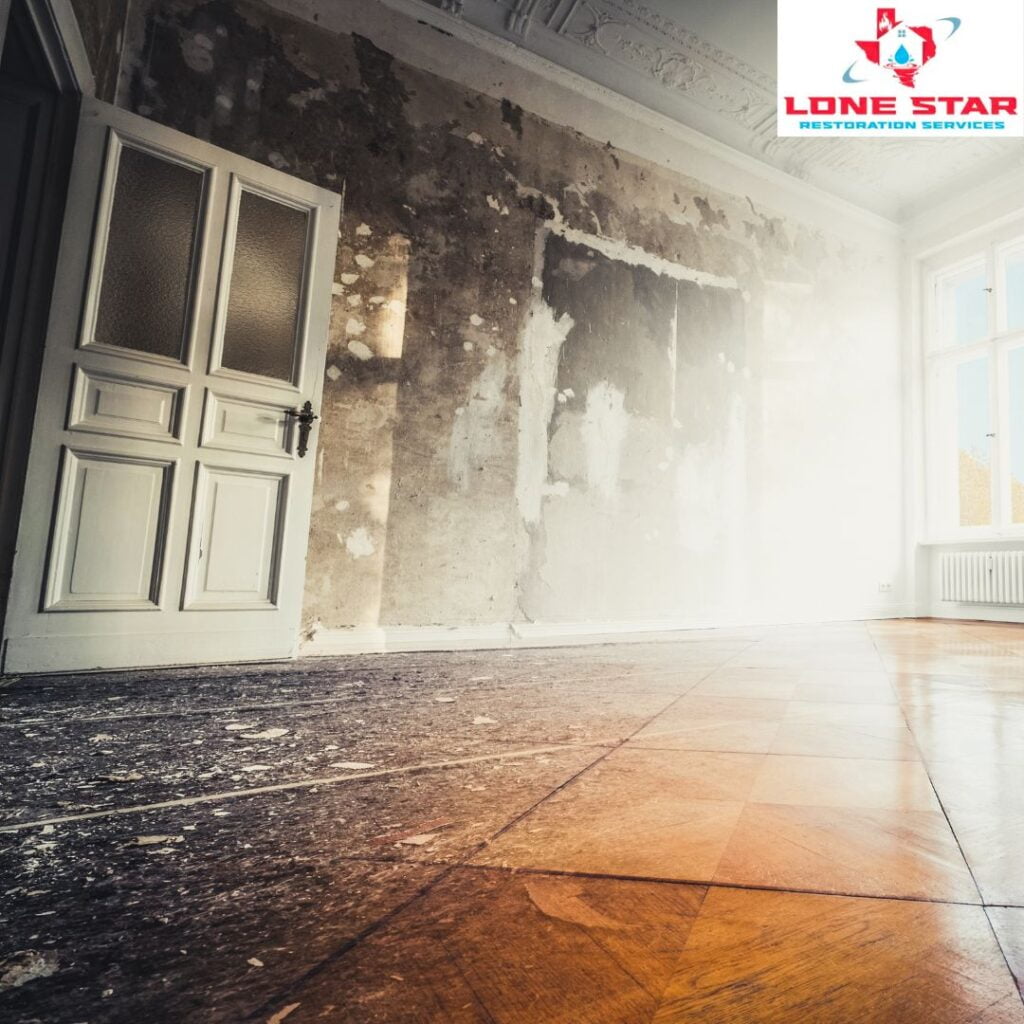Conquering Catastrophe: Navigating Post-Storm Restoration with Lone Star’s Expertise
Storms, with their unpredictable and often devastating nature, can leave a trail of destruction for homeowners and businesses alike. Navigating the aftermath of such events can be overwhelming, fraught with challenges ranging from property damage assessments to insurance claims. It’s in these turbulent times that the expertise and guidance of a seasoned restoration partner become invaluable.
Lone Star Restoration, with its deep understanding of post-storm recovery, stands ready to assist those impacted by these natural calamities. This guide aims to equip you with the necessary knowledge and steps to effectively manage the aftermath of a storm. From initial damage assessment to the final touches of restoration, Lone Star’s comprehensive approach ensures that you’re not alone in mastering the disaster and rebuilding your life or business. Join us as we delve into the essential strategies for navigating post-storm restoration, backed by the expertise and commitment of Lone Star Restoration.
Understanding Storm Damage
Storms can inflict a wide range of damage on properties, and comprehending the various types can help in effective recovery. The damage caused by storms typically falls into several categories, each with its unique challenges and required responses.
- Water Damage: One of the most common results of storms, water damage can stem from flooding, leaks, or high humidity. It can weaken structural integrity, ruin belongings, and lead to mold growth if not promptly addressed.
- Wind Damage: Strong winds can cause significant harm to the exterior of buildings, including roof damage, broken windows, and downed trees. Assessing this damage quickly is crucial to prevent further harm from exposure to the elements.
- Structural Damage: Storms, especially severe ones, can compromise the structural integrity of a building. This damage might include foundation issues, broken support beams, or compromised walls, requiring immediate attention for safety and restoration.
- Long-term Effects: Beyond the immediate damage, storms can have lasting impacts on a property. Continuous exposure to moisture can cause long-term deterioration, and even minor issues, if unchecked, can evolve into major problems over time.
Understanding the nature and extent of the damage is the first step in the restoration process. It guides the recovery efforts, ensuring that they are appropriately targeted and effective. With expertise in handling all types of storm damage, Lone Star Restoration plays a critical role in helping property owners assess, plan, and execute the necessary recovery steps, laying the foundation for a successful restoration process.
Initial Steps After a Storm
In the immediate aftermath of a storm, taking the right actions can be critical for the safety of occupants and the integrity of the property. Here are the initial steps recommended by Lone Star Restoration:
- Ensuring Personal Safety: The first priority is to ensure the safety of all individuals. This includes checking for electrical hazards, gas leaks, and structural damage that may pose immediate risks. Avoid entering flooded areas until it’s confirmed safe, and be cautious of sharp debris.
- Assessing the Damage: Once it’s safe, conduct a preliminary assessment of the property. Look for visible signs of damage to the roof, walls, windows, and foundation. This assessment helps in understanding the extent of the damage and the urgency of the required repairs.
- Documenting the Damage: Documenting the damage is crucial for insurance claims. Take photos or videos of all affected areas, including structural damage and damaged personal property. Keep a record of all damages, no matter how minor they may seem, as this will be essential for insurance purposes.
- Securing the Property: To prevent further damage, secure the property as much as possible. This might involve boarding up broken windows, covering damaged roofs with tarps, and removing valuable items from affected areas.
- Contacting Your Insurance Company: Report the damage to your insurance company as soon as possible. Provide them with the documentation of the damage and inquire about the steps to file a claim. Understanding your policy coverage will help in making informed decisions during the restoration process.
- Seeking Professional Help: Contact a professional restoration company like Lone Star Restoration for a thorough inspection and to begin the restoration process. Professionals can assess the damage more accurately and provide the necessary services for a comprehensive restoration.
These initial steps are critical in laying the groundwork for a successful restoration process. By acting swiftly and methodically, property owners can mitigate further damage and pave the way for an efficient recovery. Lone Star Restoration’s expertise and swift response can be invaluable in guiding property owners through these crucial early stages of post-storm restoration.
Working with Insurance Companies
Navigating the complexities of insurance claims is a critical part of the post-storm restoration process. Lone Star Restoration provides expert guidance in this area:
- Understanding Your Coverage: Familiarize yourself with your insurance policy to understand what types of damage are covered and any deductibles that may apply. Knowing your coverage helps in setting realistic expectations for the claims process.
- Effective Communication: Keep open and consistent communication with your insurance adjuster. Provide all necessary documentation of the damage and respond promptly to any requests for additional information.
- Maximizing Your Claim: To ensure you receive the maximum benefit from your claim, meticulously document all damages and keep records of any repair and restoration expenses. Lone Star Restoration can assist in providing detailed estimates and reports that can support your claim.
Lone Star’s Restoration Process
Lone Star Restoration brings a structured and efficient approach to post-storm restoration:
- Comprehensive Assessment: Our team conducts a thorough assessment of the damage, using advanced tools and techniques to identify both visible and hidden issues.
- Customized Restoration Plan: Based on the assessment, we develop a customized restoration plan that addresses all aspects of the damage, ensuring a comprehensive recovery.
- Quality Restoration Services: Our services include water extraction, drying, mold remediation, structural repairs, and rebuilding. We ensure high-quality workmanship in every aspect of the restoration.
- Ongoing Communication: Keeping clients informed throughout the restoration process is a priority, ensuring transparency and peace of mind.
Preventive Measures for Future Storms
Effective preparation is essential in reducing the severity of storm damage. Lone Star Restoration emphasizes the importance of proactive measures to safeguard properties:
- Regular Property Maintenance: Consistent upkeep is crucial in storm preparedness. This includes routine inspections and maintenance of roofs to check for and repair any vulnerabilities, ensuring gutters and downspouts are clear to prevent water buildup, and checking the integrity of drainage systems to avoid flooding.
- Protective Installations: Installing storm shutters on windows can significantly mitigate the impact of high winds and flying debris. Reinforcing doors, particularly garage doors, adds another layer of protection. It’s also advised to anchor outdoor items or move them indoors to prevent them from becoming projectiles during high winds.
- Landscaping Considerations: Properly maintaining the landscape can reduce storm damage. This includes trimming trees and shrubs to prevent overhanging branches from breaking and causing damage, and ensuring the grading of the land directs water away from the building.
- Emergency Preparedness Kit: Encourage having an emergency kit ready with essentials like water, non-perishable food, first aid supplies, flashlights, and batteries. This kit can be invaluable in the immediate aftermath of a storm when access to basic services might be limited.
- Creating a Disaster Plan: Have a clear, well-communicated plan in place for what to do during a storm. This should include evacuation routes, emergency contact information, and a designated safe room in the property.
Conclusion
Navigating the aftermath of a storm is a complex process that requires informed decision-making, timely action, and professional assistance. Lone Star Restoration is committed to guiding clients through this challenging journey. Our extensive experience in post-storm restoration, combined with a thorough and empathetic approach, ensures that properties are not only effectively restored but are also better fortified against future storms.
We stand as a pillar of strength and reliability, helping turn the tide of disaster into a story of resilience and recovery. For those seeking expert guidance and superior restoration services, Lone Star Restoration is your trusted partner in transforming the aftermath of a storm into an opportunity for rebuilding and reinforcement.





